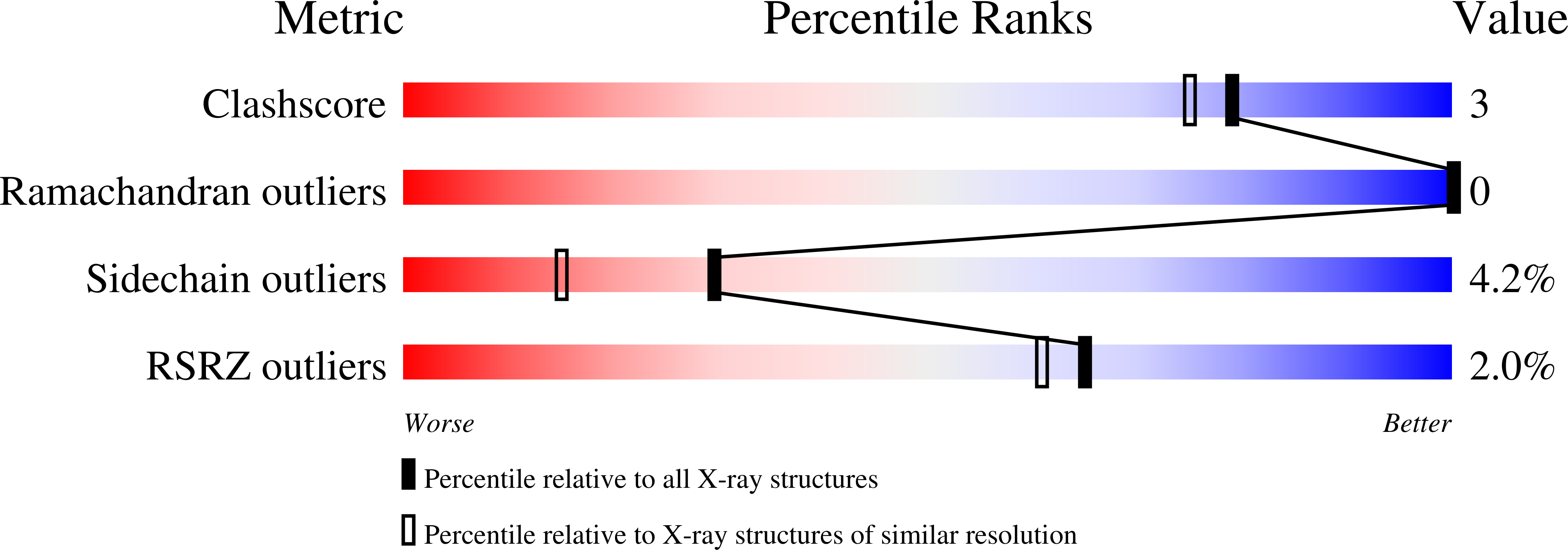A structure-based mechanism for copper-zinc superoxide dismutase.
Hart, P.J., Balbirnie, M.M., Ogihara, N.L., Nersissian, A.M., Weiss, M.S., Valentine, J.S., Eisenberg, D.(1999) Biochemistry 38: 2167-2178
- PubMed: 10026301
- DOI: https://doi.org/10.1021/bi982284u
- Primary Citation of Related Structures:
1B4L, 1B4T, 1F18, 1F1A, 1F1D, 1F1G, 1YAZ, 2JCW - PubMed Abstract:
A reaction cycle is proposed for the mechanism of copper-zinc superoxide dismutase (CuZnSOD) that involves inner sphere electron transfer from superoxide to Cu(II) in one portion of the cycle and outer sphere electron transfer from Cu(I) to superoxide in the other portion of the cycle. This mechanism is based on three yeast CuZnSOD structures determined by X-ray crystallography together with many other observations. The new structures reported here are (1) wild type under 15 atm of oxygen pressure, (2) wild type in the presence of azide, and (3) the His48Cys mutant. Final R-values for the three structures are respectively 20.0%, 17.3%, and 20.9%. Comparison of these three new structures to the wild-type yeast Cu(I)ZnSOD model, which has a broken imidazolate bridge, reveals the following: (i) The protein backbones (the "SOD rack") remain essentially unchanged. (ii) A pressure of 15 atm of oxygen causes a displacement of the copper ion 0.37 A from its Cu(I) position in the trigonal plane formed by His46, His48, and His120. The displacement is perpendicular to this plane and toward the NE2 atom of His63 and is accompanied by elongated copper electron density in the direction of the displacement suggestive of two copper positions in the crystal. The copper geometry remains three coordinate, but the His48-Cu bond distance increases by 0.18 A. (iii) Azide binding also causes a displacement of the copper toward His63 such that it moves 1.28 A from the wild-type Cu(I) position, but unlike the effect of 15 atm of oxygen, there is no two-state character. The geometry becomes five-coordinate square pyramidal, and the His63 imidazolate bridge re-forms. The His48-Cu distance increases by 0.70 A, suggesting that His48 becomes an axial ligand. (iv) The His63 imidazole ring tilts upon 15 atm of oxygen treatment and azide binding. Its NE2 atom moves toward the trigonal plane by 0.28 and 0.66 A, respectively, in these structures. (v) The replacement of His48 by Cys, which does not bind copper, results in a five-coordinate square pyramidal, bridge-intact copper geometry with a novel chloride ligand. Combining results from these and other CuZnSOD crystal structures, we offer the outlines of a structure-based cyclic mechanism.
Organizational Affiliation:
UCLA-DOE Laboratory of Structural Biology and Molecular Medicine, University of California, Los Angeles 90095, USA.


















